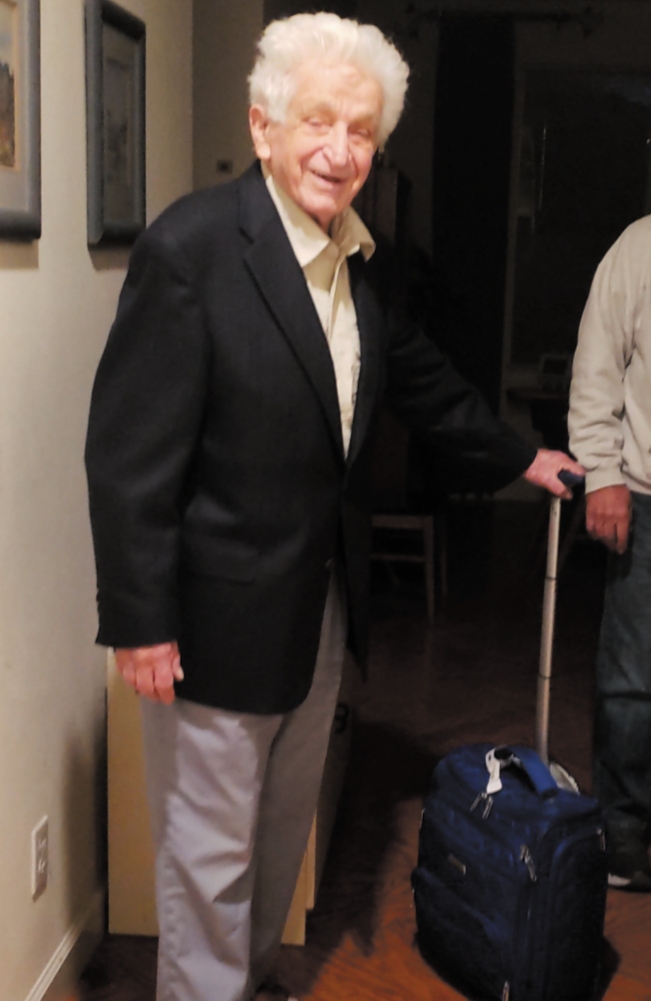Michael Pollak
DOI: 10.1063/PT.3.4300
Michael Pollak, a professor emeritus of physics at the University of California, Riverside, died on 22 March 2019 at home in San Luis Obispo. Mike excelled in both theory and experiment and was a thinker ahead of his time.

Michael Pollak

Mike was born on 1 September 1926 in Ostrava, Czechoslovakia. In 1940 he and his family immigrated to Palestine (now Israel), though Mike did return to Czechoslovakia for a time after the end of World War II. He received a BSc in electrical engineering from the Israel Institute of Technology (now the Technion) in 1953. Two years later he immigrated to the US and entered the University of Pittsburgh, where he earned an MS in 1957 and a PhD under Robert Keyes in 1958. For his thesis, he used piezoresistance measurements to study the conduction band of germanium.
After his graduate studies, Mike joined Bell Labs in Murray Hill, New Jersey, as a postdoc. In 1960 he accepted a permanent position as a staff scientist at Westinghouse Research Laboratories in Pittsburgh before becoming a professor at UC Riverside in 1966. Although he officially retired from the university in 1993, he continued to teach through 1998 and remained active in research. In his most recent publication, in January, he emphasized that the vast majority of materials on Earth are noncrystalline, from which it follows that methods to predict the materials’ transport properties are linked to understanding disordered insulators in a fundamental way.
One of us (Castro Neto) was inspired by Mike’s experimental and theoretical studies on electronic properties of DNA. Published in the mid 1960s, they are possibly the earliest works in which DNA was thought of as a disordered one-dimensional conductor. As Mike confided to Castro Neto, “It was too early, too soon” to receive appropriate attention from the scientific community. Not until the 1990s did 1D materials again became a hot topic in the context of Luttinger liquids and carbon nanotubes.
In the realm of conduction in disordered semiconductors, Mike was one of only a few contemporary physicists to be cited in the Nobel addresses of both Nevill Mott and Philip Anderson. He is best known for his proof that the Coulomb interaction between electrons in disordered Anderson insulators must cause the density of electronic states to vanish at the Fermi energy. That phenomenon became known as the Coulomb gap, and the system as the electron glass.
One consequence of Mike’s result was that the electrical conductivity of the electron glass must vanish in the low-temperature limit more rapidly than Mott’s variable-range-hopping prediction. In deriving the DC conductivity, Mike used percolation theory rather than Mott’s local optimization scheme. Doing so revealed that Mott’s optimized electronic transitions were also described by the smallest possible values of the largest resistance required to generate a connected conducting path across the system. One of us (Hunt) was influenced by Mike’s work in the 1980s and 1990s on very slow relaxation processes and glass transitions in glassy electronic systems, work that connected with AC conductivity and dielectric relaxation in other frequency ranges Mike had investigated decades earlier.
At an afternoon tea gathering at Bell Labs in 1959, Mike and one of us (Geballe) learned from Anderson that he had been analyzing the impurity wavefunctions in silicon being mapped out by George Feher with his newly developed electron-nuclear double-resonance scheme. Anderson said there should be an observable contribution to the dielectric constant at doping levels just below those needed to form an impurity band.
Mike and Geballe measured the frequency-dependent conductivity with a series of properly doped samples, and with Mike’s experimental skill we found convincing evidence. In 1960 we went to the International Conference on the Physics of Semiconductors, where Mike presented our work. It was held in Prague during a rare instance in which science, culture, and freedom intersected behind the Iron Curtain. The conference attendees were invited to a spectacular performance of Antonín Dvořák’s Rusalka. We went from our hotel to the opera house in an old-style streetcar. Mike was in his element, striking up random conversations—sprinkled with his usual banter and laughter—with nearby strangers.
His “drawn-out humor,” as Mike translated it, was exactly the same in Czech. Mike’s mother, an English teacher in Prague, enjoyed the freedom of showing us around town. I recall visiting a Jewish synagogue and the Old Jewish Cemetery, which I was told had been preserved by the Nazis for a museum to a past era. The joy of the mother–son reunion was tempered by his mother’s unease that Mike might be detained at the airport, as his earlier departure from Czechoslovakia after World War II was not through official channels. Typical of Mike’s perspective and positive attitude, he was unconcerned; he knew of worse places to be than postwar Czechoslovakia. Mike’s contributions, both professional and personal, will remain lasting gifts.
More about the Authors
Antonio H. Castro Neto. National University of Singapore.
Theodore H. Geballe. Stanford University, Stanford, California.
Allen G. Hunt. Wright State University, Dayton, Ohio.
